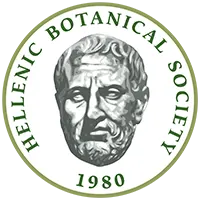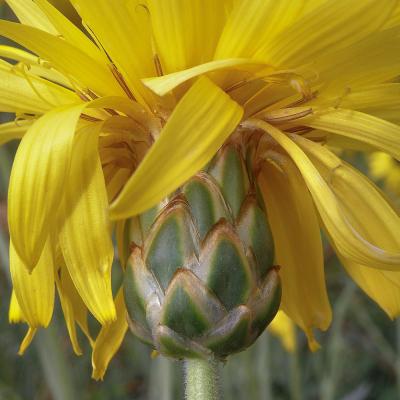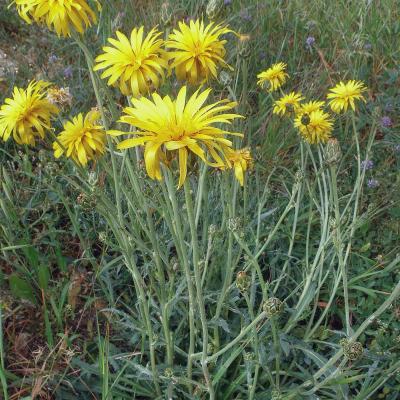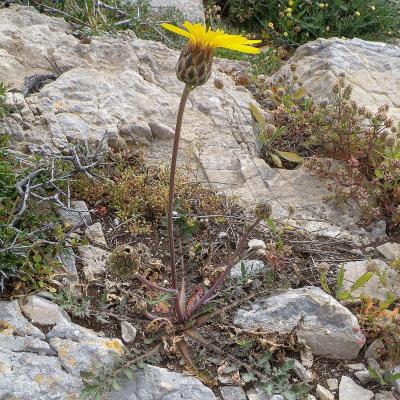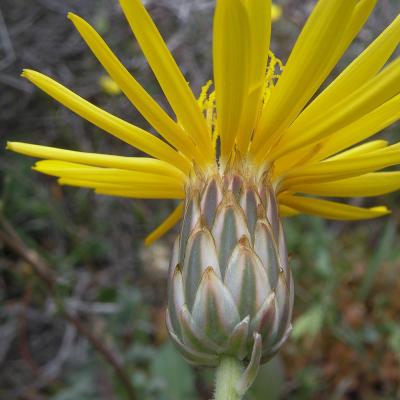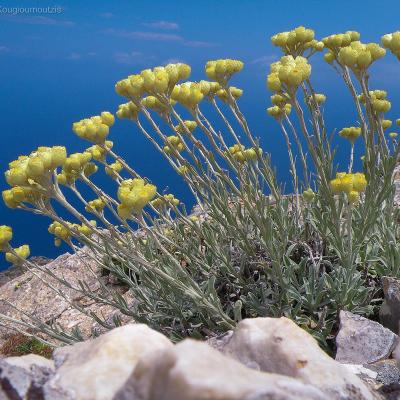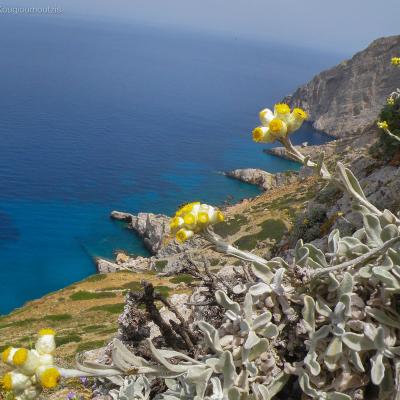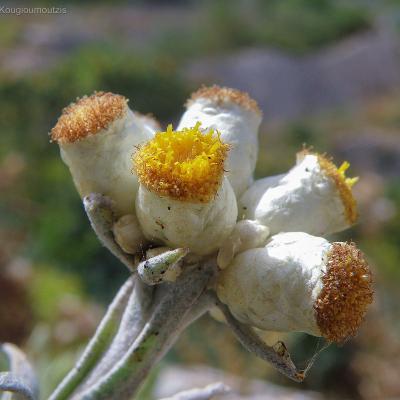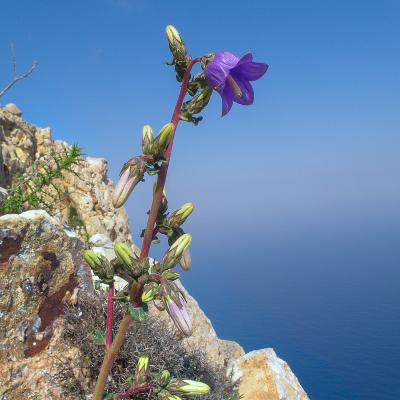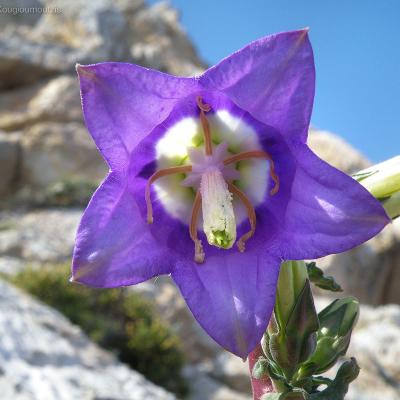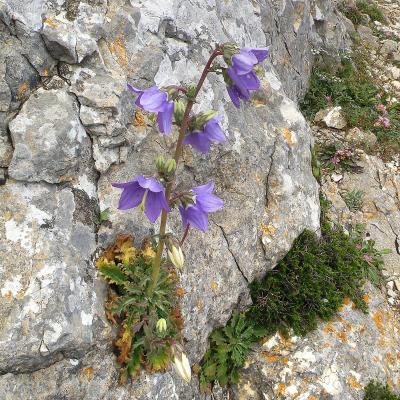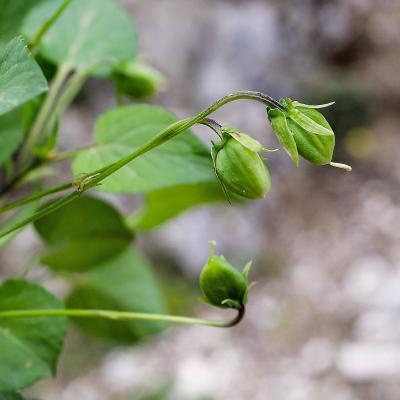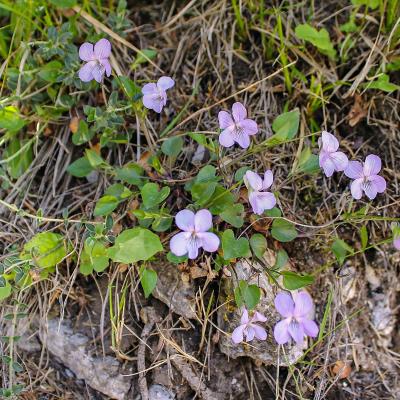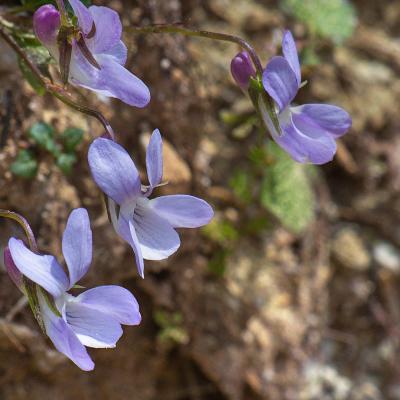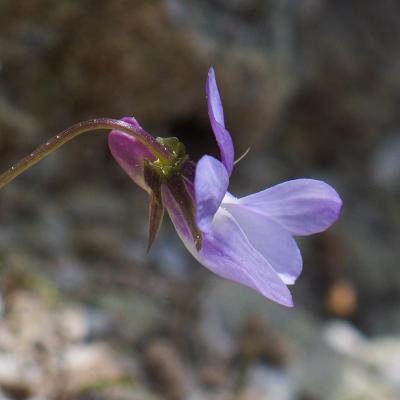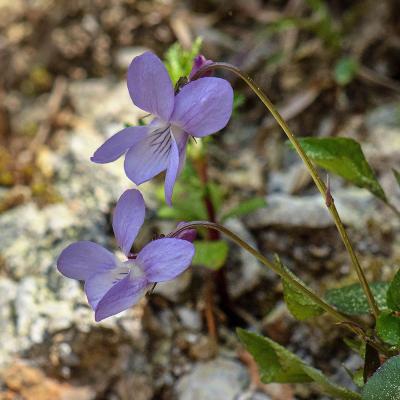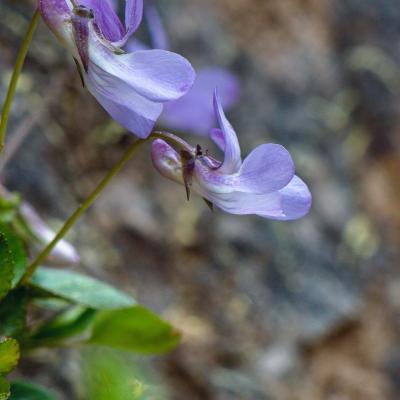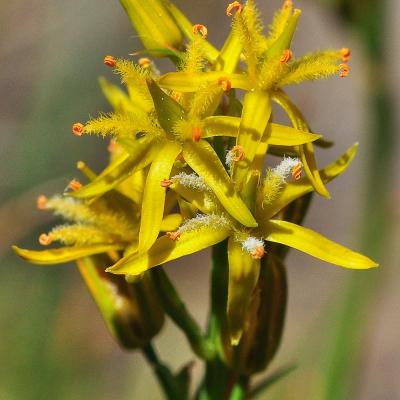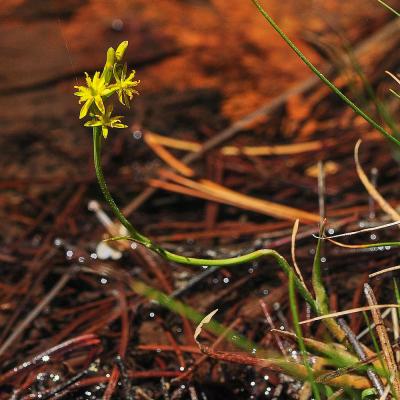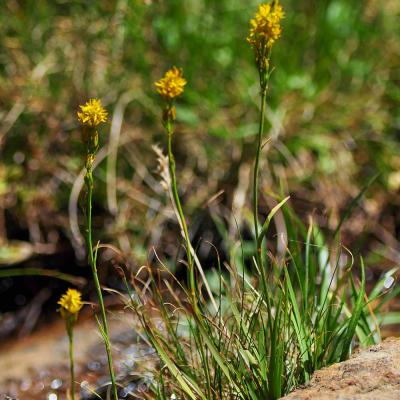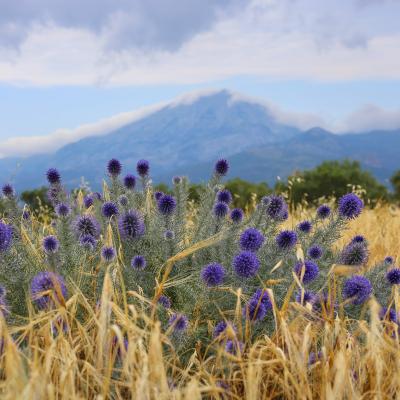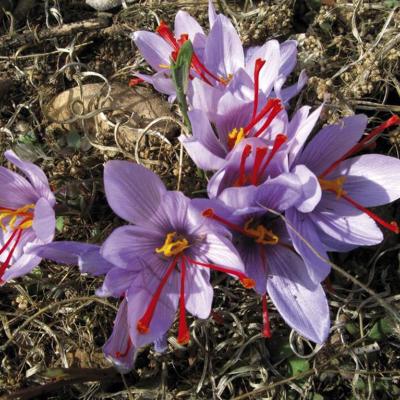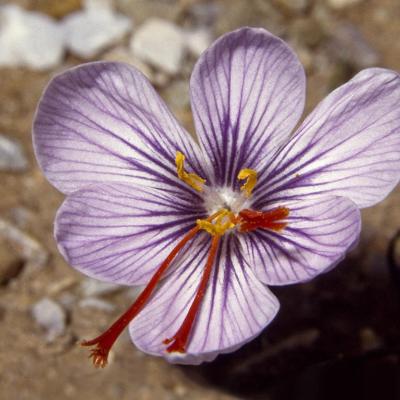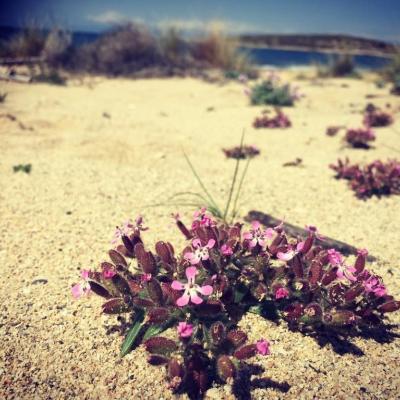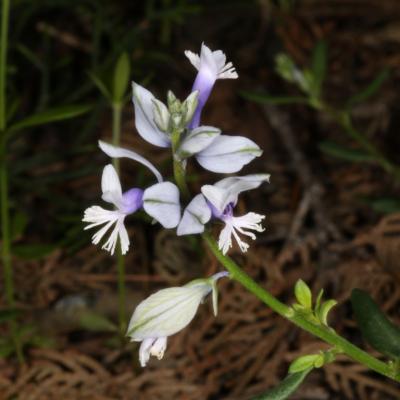Plant of the month
The genus Hymenonema is the only Greek endemic genus comprising two representatives, namely H. graecum and H. laconicum. The former is an endemic species occurring in the phytogeographical regions of the Cyclades and Kriti-Karpathos. Hymenonema graecum probably emerged via allopatric speciation during the Pliocene/Pleistocene boundary. It grows on limestone, granite or schists, up to 450 m a.s.l.
Helichrysum amorginum is a narrow endemic of the Amorgos’ archipelago, first described by Orphanides in the mid-19th century. It grows on calcareous crevices and cliffs. Its inflorescence is a (sub-)globose capitula, bearing distinctive white to whitish or whitish-pink bracts. The Chozoviotissa monastery in Amorgos – one of the most significant Aegean refugia, as it hosts several narrow and rare endemic taxa – is the species’ locus classicus.
Campanula laciniata is a palaeoendemic perennial chasmophyte, with a disjunct and fragmented distribution, occurring in the phytogeographical regions of the Cyclades and Kriti-Karpathos. It usually grows on precipitous, often inaccessible, calcareous cliffs, it has large, showy flowers and often comprises small and scattered populations.
Rhizomatous perennial herbaceous plant, merely reaching 10cm in height. Basal leaves are cordate, glabrous, dark green, crenate, with acute to obtuse apex, forming a rosette. Cauline leaves are similar, though usually more acute. Long peduncles bear the flowers that are unscented and rose-violet to whitish in colour. Flowering time March – June.
Narthecium scardicum Košanin is a member of Melanthiaceae family. It is balcan endemic, distributed in NW Greece, NE Albania and SW former Jugoslavia, with the locus classicus located in the latter and more specifically on Mt Scardos, from which derives the specific name of the plant. In Greece it is fairly rare, as it can be seen only on two serpentine mountains of Northern Pindos, Mt Smolikas and Mt Mavrovouni, in marshy places by springs and brooks, at an altitude of 1500 to 2100 m. The main flowering period is in July. N.
Already known to Tournefort, Echinops graecus is a species endemic to Greece. It is easily distinguished from all other species in the genus by its two-pinnatisect leaves which densely cover the stem up to the inflorescence. Being a photophilic and thermophilus species of low altitudes it inhabits dry fields, phrygana, olive groves and vineyards, as well as sandy coastal habitats. E.
Crocus cartwrightianus is a Greek endemic geophyte, occurring in Sterea Ellas, the Peloponnese and several Aegean islands. It flowers from October till January. The botanist William Herbert named it after John Cartwright, the British consul in Constantinople in the early 19th century. Crocus cartwrightianus is a possible ancestor of the cultivated C. sativus. According to Greek mythology, Crocus was a young man, a friend of Hermes, accidentally killed by the god.
Saponaria jagelii is a Greek narrow endemic, occurring only at two sites in W Elafonisos. It has been reported, but not recorded from the Malea peninsula. It flowers from late March to early May, while its fruiting period lasts from early May to early June. It grows exclusively on sandy beaches (dunes) and is part of the characteristic plant communities formed in disturbed sites along sandy beaches.
Polygala helenae is a Greek single island endemic, known only from two sites near Kalamos in Kythira. It flowers mainly in April at low altitudes, in phrygana and on sandy soil. Polygala helenae was assessed as a Vulnerable taxon in the first edition of the Red Data Book of the Rare and Threatened Plants of Greece, due to its restricted distribution and its small population. At that time no major threats were detected that might affect the species’ survival.
Cyclamen is a short herbaceous perennial geophyte with mainly heart-shaped leaves and long stems. Flowers appear in autumn, in shades of rose pink. Leaves appear during flowering, variable in shape.
Cyclamen hederifolium is one of the most widespread species in the wild and grows in southern France, southern Switzerland, Italy, most of the Balkans, Greece, west and south western Turkey and on many of the Mediterranean islands. Cyclamen hederifolium grows in shade, in woodland and scrubs, from sea level to 1300m.
